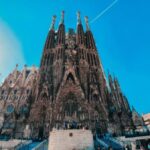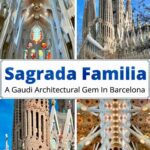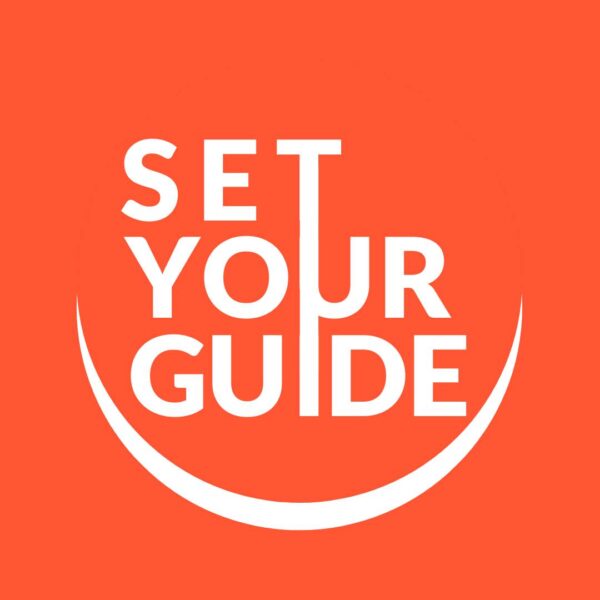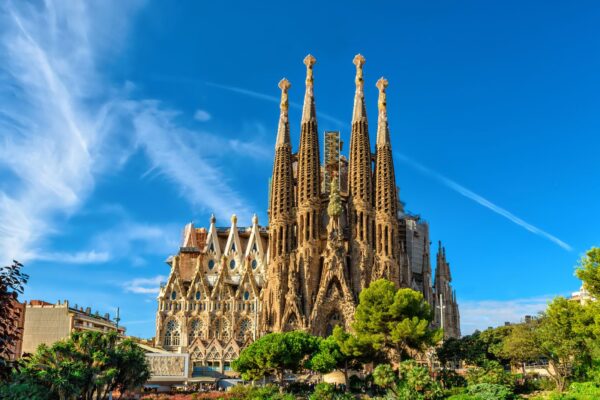
The Sagrada Familia, an architectural masterpiece designed by Antoni Gaudí, stands as an enduring symbol of Barcelona's rich cultural heritage. Construction of this basilica began in 1882 and has spanned over a century, captivating millions of visitors with its unique style and intricate details.
In exploring The History of Sagrada Familia: Barcelona's Iconic Landmark in Spain, one discovers a tale of ambition, artistry, and dedication. Despite its ongoing construction, the Sagrada Familia has become a UNESCO World Heritage Site and remains one of the most recognizable landmarks in the world.
The Architectural Marvel of the Sagrada Familia: A Blend of History and Innovation
The Sagrada Familia is not just a church; it is an architectural marvel that seamlessly combines history and innovation. Designed by Antoni Gaudí, this basilica showcases a unique style that incorporates Gothic and Art Nouveau elements. Gaudí's vision was to create a structure that reflects the natural world, making extensive use of organic shapes and forms that evoke the beauty of nature.
One of the most striking features of the Sagrada Familia is its towering spires, each representing a different biblical figure. The design incorporates innovative techniques such as hyperboloid structures and intricate facades that tell the story of Jesus Christ's life. Visitors are often amazed by how Gaudí's use of light and color transforms the interior, creating a spiritual experience that is both uplifting and inspiring.
The ongoing construction of the Sagrada Familia is a testament to human creativity and determination. Over the years, the project has adapted to modern construction technologies while staying true to Gaudí's original vision. Key milestones include:
- Completion of the Nativity Facade in 1935
- Construction of the Passion Facade in the 1970s
- Projected completion date of 2026, marking the centenary of Gaudí's death
As the Sagrada Familia continues to evolve, it stands as a symbol of Barcelona's identity and artistic heritage. The blend of historical significance and modern innovation makes it a vital piece of cultural history, drawing millions of visitors each year who come to witness this extraordinary landmark in person.
Key Historical Events Shaping the Construction of the Sagrada Familia
The construction of the Sagrada Familia has been shaped by several key historical events that reflect both the evolution of architectural practices and the societal context of the time. One significant milestone occurred in 1926 when Antoni Gaudí tragically passed away after being hit by a tram. His death left the project without its visionary leader, and the construction faced numerous challenges as it transitioned to new architects seeking to honor his original designs.
In the 1930s, the Spanish Civil War posed a major threat to the Sagrada Familia, causing significant destruction to the site. Many of Gaudí's original plans and models were lost during this tumultuous period. However, the resilience of the project shone through as subsequent architects worked tirelessly to reconstruct the lost elements and adapt them to modern techniques.
Another pivotal moment in the basilica's history came in 2010 when Pope Benedict XVI consecrated the Sagrada Familia as a minor basilica, elevating its status and attracting international attention. This acknowledgment highlighted the basilica's importance not only as an architectural wonder but also as a spiritual center for many. As construction progressed, the completion of significant facades and towers has continued to inspire awe and devotion.
Today, the Sagrada Familia is projected to be completed by 2026, coinciding with the centenary of Gaudí's death. This timeline symbolizes a renewed commitment to realizing his vision while integrating contemporary architectural advancements. The Sagrada Familia embodies a rich tapestry of history, creativity, and ongoing innovation, making it a cornerstone of Barcelona's cultural landscape.
The Influence of Antoni Gaudí on the Sagrada Familia's Design and Legacy
Antoni Gaudí's influence on the Sagrada Familia is profound and multifaceted, blending spirituality with groundbreaking architectural techniques. His vision transcended mere construction; he sought to create a divine experience through architecture. Gaudí believed that buildings should inspire awe and reflect the glory of God, which is evident in the basilica's intricate designs and symbolic elements.
One of the hallmarks of Gaudí's design is his use of natural forms and structures, which he incorporated in several ways:
- Organic Shapes: Mimicking nature, Gaudí fashioned columns that resemble trees, creating a forest-like atmosphere inside the basilica.
- Light Play: He skillfully manipulated light through stained glass to enhance the spiritual ambiance, symbolizing divine presence.
- Symbolism: Every detail, from the facades to the sculptures, embodies biblical themes, enriching the visitor's spiritual journey.
Gaudí's innovative use of materials and construction techniques has left a lasting legacy, influencing architects worldwide. His integration of forms allows for structural integrity while maintaining aesthetic beauty, demonstrating a seamless connection between art and engineering. Today, the Sagrada Familia stands as a testament to his genius, inspiring future generations to explore the boundaries of architecture.
To illustrate Gaudí's unique approach, consider the following comparison of his techniques with those of traditional architects:
| Aspect | Traditional Architecture | Gaudí's Approach |
|---|---|---|
| Design Philosophy | Symmetry and order | Organic forms and chaos |
| Structural Techniques | Rectilinear structures | Hyperboloid and parabolic shapes |
| Material Use | Standard materials | Innovative and local materials |
Gaudí's legacy is not just encapsulated in the Sagrada Familia but reverberates throughout the world of architecture. His ability to infuse spirituality into design has inspired countless architects to pursue complexity and beauty in their work, ensuring that the Sagrada Familia remains an enduring symbol of creative ingenuity.
Understanding the Symbolism Behind the Sagrada Familia's Facades
The facades of the Sagrada Familia are not merely decorative; they are rich in symbolism and narratives that reflect the life of Christ and the teachings of Christianity. Each facade serves a distinct purpose and embodies specific themes, making them integral to the overall message of the basilica. For instance, the Nativity Facade celebrates the birth of Jesus, adorned with intricate carvings depicting angels and Biblical figures, emphasizing themes of joy and wonder.
On the other hand, the Passion Facade presents a stark contrast, focusing on the suffering and sacrifice of Christ. Its angular, rough hewn sculptures and dramatic forms evoke a sense of mourning and reflection. This facade's design illustrates the gravity of Christ's sacrifice, compelling visitors to ponder the deeper meanings behind the architectural choices made by Gaudí. The use of light and shadow further amplifies the emotional impact, inviting contemplation on the themes of redemption and faith.
Additionally, the Glory Facade, still under construction, aims to depict the resurrection and ascension of Jesus, symbolizing hope and eternal life. This facade will be the most complex, intended to represent the path to God through grace and salvation. Such layered meanings in the facades showcase Gaudí's intention for the Sagrada Familia to be a visual Bible, where every stone tells a story and serves to educate and inspire visitors about the spiritual journey.
The intricate details found in each facade also highlight Gaudí's belief in the unity of nature and spirituality. Elements such as natural motifs, organic shapes, and vibrant colors reflect the divine presence in the natural world. This approach reinforces the notion that architecture can transcend mere functionality, becoming a medium through which visitors can experience the divine. In this way, the facades of the Sagrada Familia are not only architectural features but also profound expressions of faith and artistry.
Visiting the Sagrada Familia: Tips for Exploring Barcelona's Iconic Landmark
Visiting the Sagrada Familia is a must for anyone exploring Barcelona. To make the most of your experience, consider purchasing tickets online in advance. This will help you avoid long lines and ensure you have ample time to appreciate the intricate details of Gaudí's masterpiece. Additionally, visiting during off-peak hours, such as early in the morning or late in the afternoon, can provide a more serene atmosphere.
Once inside, take your time to absorb the breathtaking interior. Guided tours are highly recommended, as they offer valuable insights into the history and symbolism of the basilica. Many tours also include access to the towers, where visitors can enjoy stunning panoramic views of Barcelona. Be sure to explore the various chapels and facades, each with its own unique story and artistic significance.
For a truly immersive experience, consider downloading an audio guide or a mobile app that provides detailed explanations of the architecture and artistic elements throughout the Sagrada Familia. This will enhance your understanding of Gaudí's vision and the ongoing construction efforts. Remember to bring a camera, as the play of light through the stained glass windows creates an ethereal atmosphere that is perfect for photography.
Lastly, don't forget to visit the nearby park, Parc de la Ciutadella, or take a stroll down Passeig de Gràcia to appreciate other modernist architecture in Barcelona. Combining these activities with your visit to the Sagrada Familia will give you a fuller picture of the city's rich cultural landscape. Enjoy your exploration of this iconic landmark and the vibrant city surrounding it!
The Future of the Sagrada Familia: Completion Plans and Ongoing Efforts
The future of the Sagrada Familia looks promising as construction progresses towards its long-anticipated completion. With a projected finish date set for 2026, this milestone will commemorate the centenary of Antoni Gaudí's death, highlighting a significant moment in both architectural and cultural history. The final design aims to integrate Gaudí's original vision with modern construction methods, ensuring the basilica remains a symbol of innovation.
Ongoing efforts include the completion of several key elements, notably the Glory Facade, which is designed to represent the resurrection and ascension of Jesus. This facade will be the most intricate, incorporating elements that reflect the themes of hope and divine grace. The construction team is dedicated to using techniques that align with Gaudí’s innovative methods, emphasizing sustainability alongside artistic integrity.
The Sagrada Familia continues to attract millions of visitors each year, and its completion will undoubtedly elevate its status even further. To ensure the ongoing appeal of this landmark, several initiatives are being implemented:
- Enhanced Visitor Experience: Upgrades to visitor facilities and digital guides to provide deeper insights into the basilica's history and architecture.
- Educational Programs: Workshops and tours aimed at educating the public about Gaudí's vision and the construction techniques employed in the basilica.
- Sustainability Practices: Use of eco-friendly materials and methods to minimize environmental impact during the remaining construction phases.
As the Sagrada Familia moves closer to completion, it not only embodies the artistic spirit of Barcelona but also serves as an enduring symbol of faith, creativity, and resilience. The efforts underway ensure that this iconic landmark will continue to inspire future generations, remaining a testament to Gaudí's genius and the rich cultural heritage of the city.
 Unlock the Wonders of Sagrada Familia in Barcelona: Secure Your Tickets Now!
Unlock the Wonders of Sagrada Familia in Barcelona: Secure Your Tickets Now! Exploring the Majestic Staircases of Sagrada Familia in Barcelona
Exploring the Majestic Staircases of Sagrada Familia in Barcelona Captivating Pictures of Sagrada Familia: Barcelona's Dazzling Architectural Gem
Captivating Pictures of Sagrada Familia: Barcelona's Dazzling Architectural GemIf you want to know other articles similar to The History of Sagrada Familia: Barcelona's Iconic Landmark in Spain you can visit the category WHERE YOU CAN GO.
Leave a Reply










Read more!